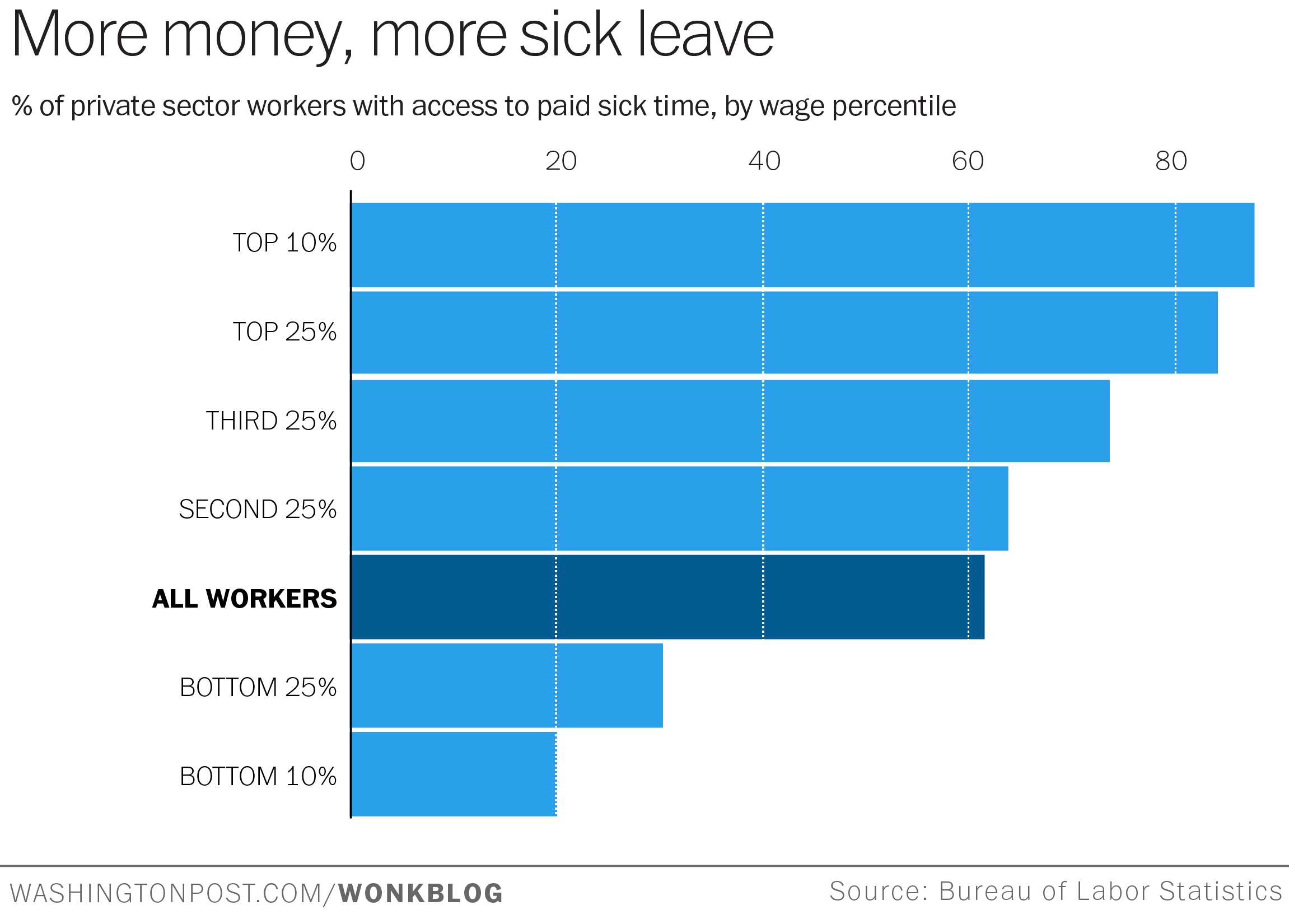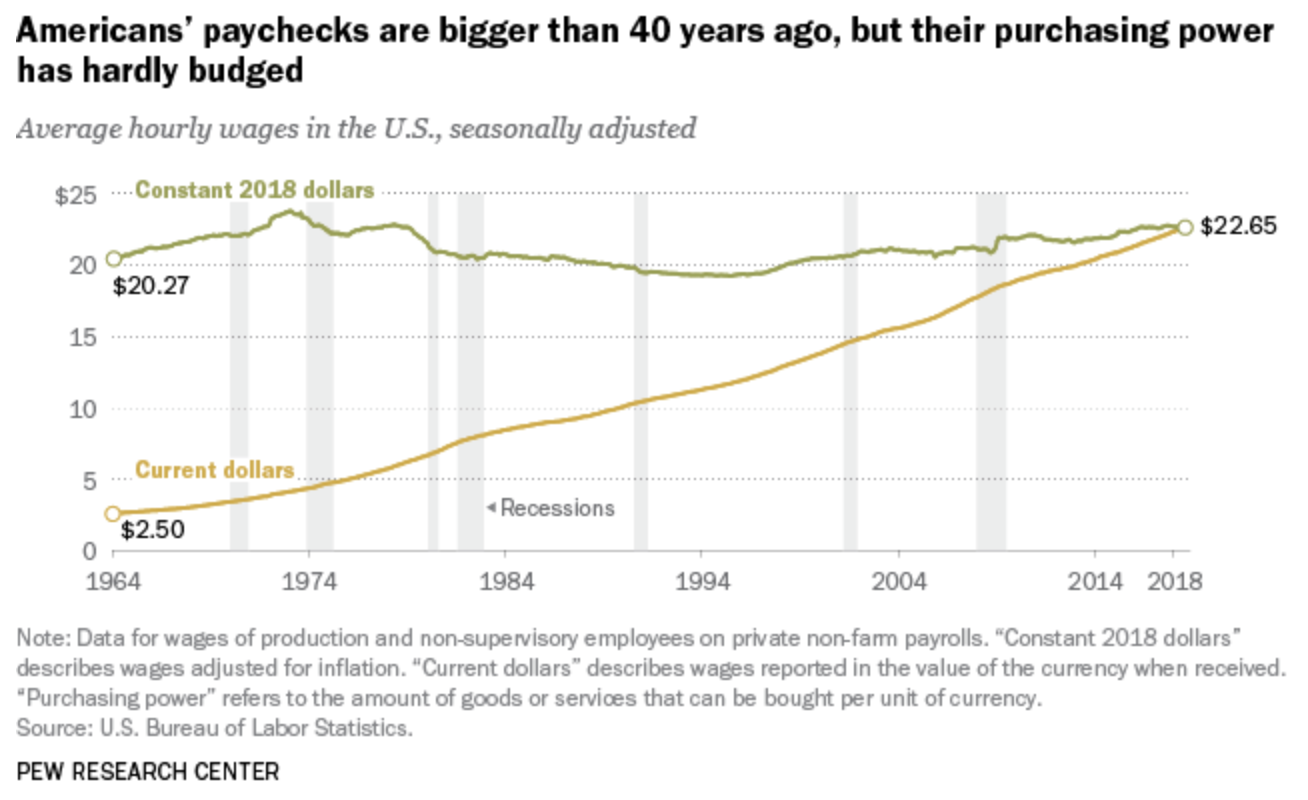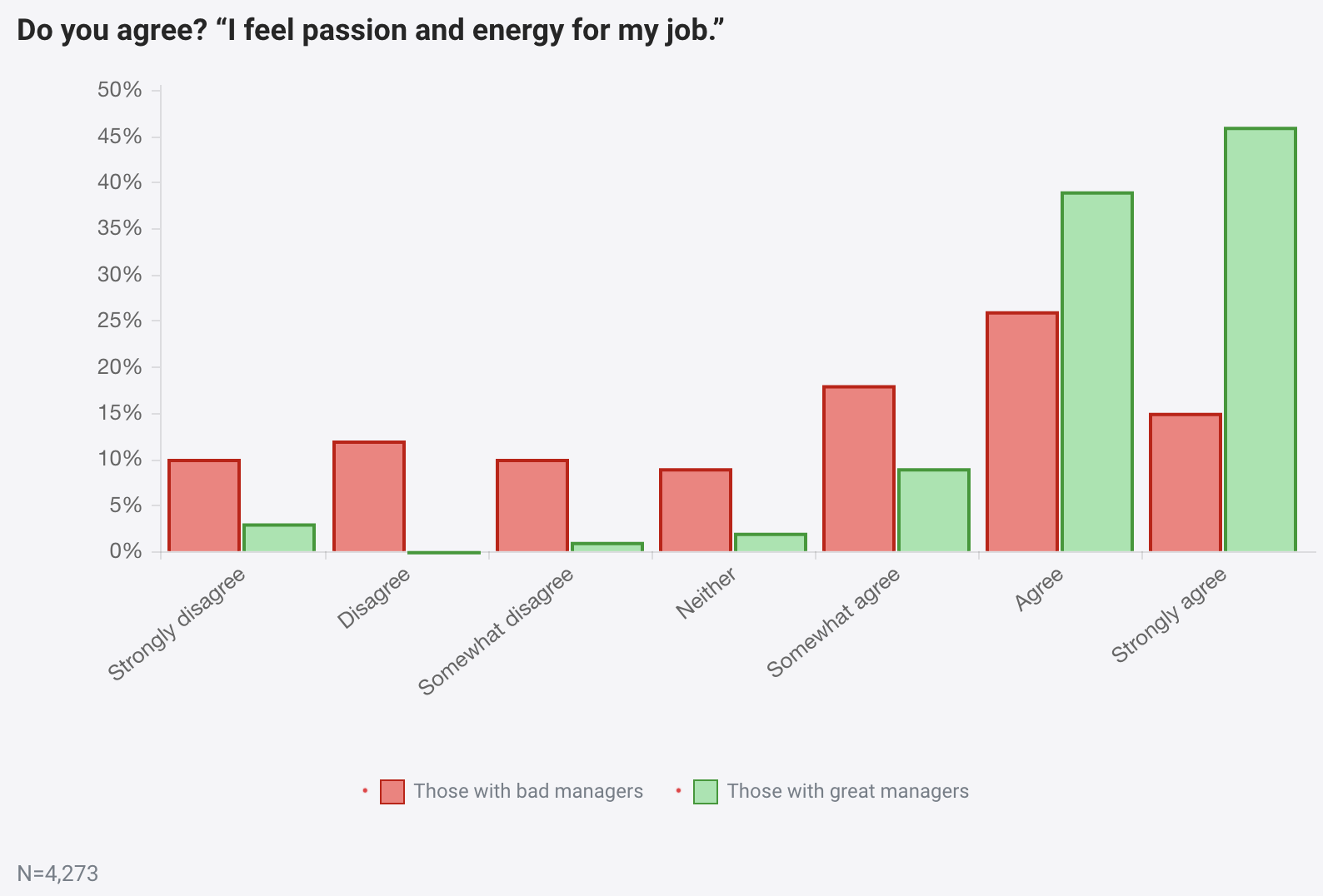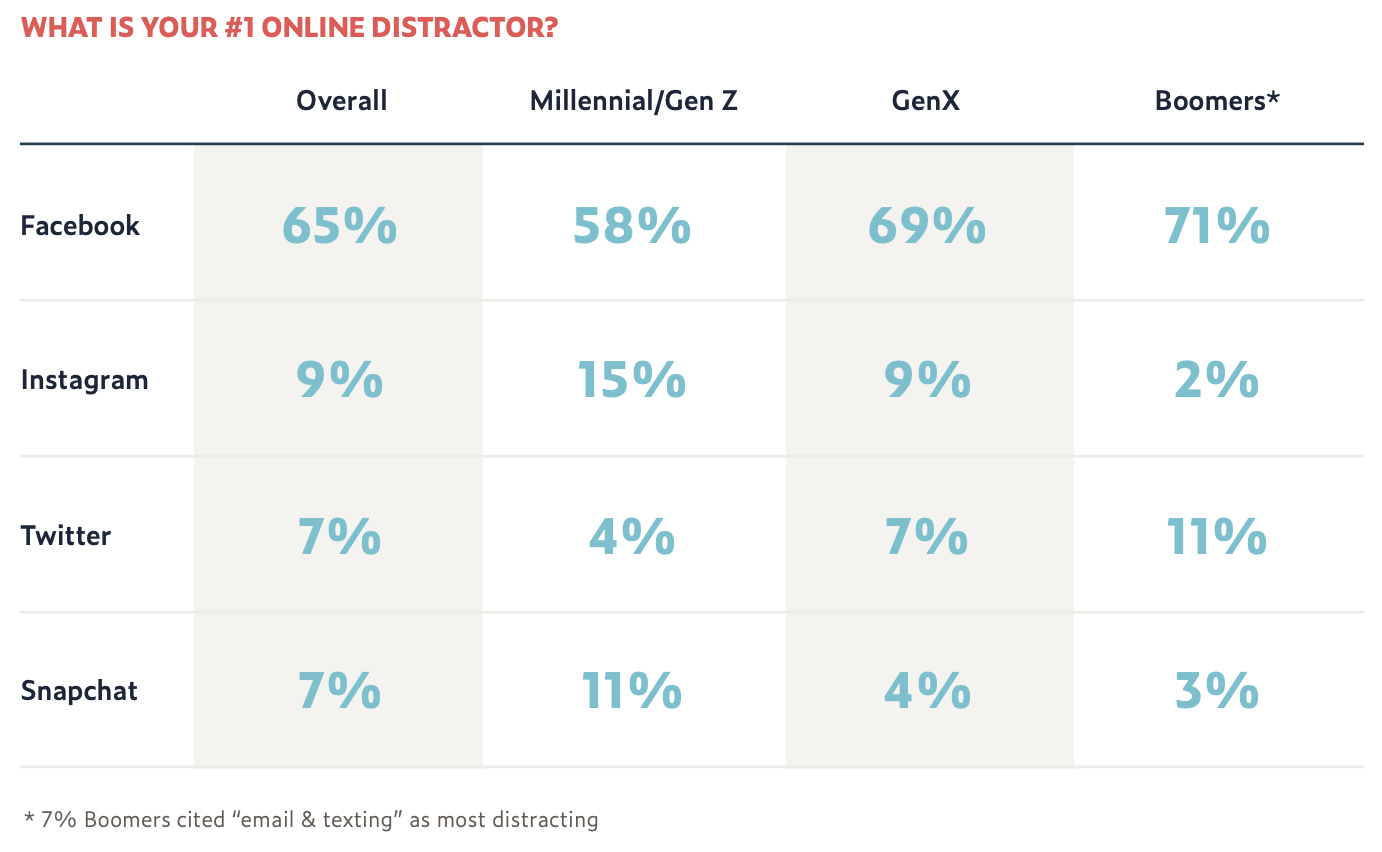Let’s be honest: Staying focused at work is hard. Really hard.
While writing this piece I’ve been distracted by Slack notifications, meetings, coworkers, songs I didn’t vibe with at the moment, and World of Warcraft YouTube videos. That’s just the abridged list.
And I’m not alone. According to the Labor Department, productivity fell in the workplace for the first time in four years. However, workplace distractions aren’t the only culprit; multiple factors are contributing to losses in productivity.
Major causes of productivity loss in the workplace
There has been lots of research in the last decade concerning the causes of productivity loss in the office. Based on that data, three main culprits for productivity loss appear:
Physical and mental illness
One survey based in the United Kingdom found that mental and physical illness have the most direct impact on productivity loss; illness accounts for about 84% of direct effects and 93% of indirect effects. The effect sick days have on productivity loss changes depending on level of income.
In the United States, hourly and part-time workers are often not given sick days unless required by state law. Employees without guaranteed sick days are likely expected to come to work regardless of their health or ability to perform well. This means the lowest income earners often have the least amount of sick leave.
 Source: Bureau of Labor Statistics
Source: Bureau of Labor Statistics
Even if employees have sick days, there’s evidence that they aren’t using them when they’re sick. Since 1993, workers in the United Kingdom have halved the number of sick days they take per year, dropping from 7.2 days to 4.1 days.
Stigma around taking sick leave contributes to sick employees feeling pressured to come into work no matter their health. Another survey from the United Kingdom found nearly 40% of employees do not tell their managers they’re sick when calling out for fear of being judged or not believed. The same survey found that only 42% of senior managers believed the flu was a serious enough reason to not come to work, so employees’ fears aren’t misplaced.
Employees with mental health problems or mental illness are faced with an extra layer of stigma when it comes to communicating their issues with managers. In the same survey, only 39% of respondents said they would tell their manager they were staying home due to mental health issues. There is still stigma surrounding mental health, and if managers don’t see the flu as a valid reason to stay home, they probably won’t accept anxiety or depression as valid either.
The stigma surrounding mental health touches the 18.1% of Americans grappling with an anxiety disorder and nearly 1 in 12 deal with depression, stifling their productivity and career growth.
The stigma around taking sick days could explain why even employees with unlimited paid time off (PTO) are reluctant to stay home when they’re ill. Crowdfunding site Kickstarter tossed its unlimited PTO policy after a year because employees didn’t take enough time off.
Want to learn more about Collaboration & Productivity Software? Explore Collaboration & Productivity products.
Burnout
The World Health Organization (WHO) recently recognized burnout as a uniquely occupational phenomenon defined by “chronic workplace stress that has not been successfully managed.” Characteristics of burnout include:
-
- Feelings of exhaustion
- Negative affect about one’s job
- Reduced productivity
It’s unsurprising that more of the working population feels burnt out. The average American works 44 hours per week, higher than the federal limit of 40 per week for a full-time job. People end up working more than 40 hours a week by working multiple part-time jobs, engaging in the gig economy, doing overtime, or simply putting in more hours in a salaried position.
The federal government can stop a business from forcing an employee to work more than 40 hours, but it can’t stop employees from doing so anyway in one form or another.
The American workforce isn’t overworking themselves without reason. Paychecks have increased, but purchasing power has stagnated for the last 40 years. The price of higher education is increasing eight times faster than wages; at the same time, a college degree is now the bare minimum required for many jobs. Wages have not increased enough to keep up with inflation or the increased cost of living, causing employees to work longer hours and more jobs to keep up with inflated prices.
Financial pressures aren’t the only factor burning out the American workforce. 25% of American workers don’t get paid vacation or holidays. America is also the only advanced economy in the world that doesn’t provide federally mandated paid vacation or holidays.
 Source: Pew Research Center
Source: Pew Research Center
Remember, exhaustion due to overwork is only one possible cause of burnout. A survey from 2018 found the top cited reason for burnout was bad management. Employees are more likely to feel negatively about their job if they have a bad manager.
 Source: The Predictive Index
Source: The Predictive Index
Bad management, financial insecurity, and overwork have created a vicious cycle that effectively burn out much of the American workforce. And the cost of burnout isn’t cheap. Gallup estimates that productivity loss due to burnout and workplace stress costs the United States $300 billion annually.
Some companies have attempted to combat burnout by instating generous or unlimited PTO. However, if employees don’t feel empowered to take PTO for illness, they won’t do so for exhaustion or frustration.
Distractions
Alright, you’re not sick, your manager is amazing, you only work 40 hours a week, and you’re financially secure. Time to get work done.
But Facebook has different plans for your attention span.
According to a recent survey from Udemy Research, 70% of workers say they feel distracted at work and experience an average of 56 disruptions every day. 40% of workplace distractions are self-inflicted, including scrolling through social media, looking for music, or answering personal messages.

Source: Udemy Research
36% of millennial and Gen Z respondents said they spent two or more hours on their phones during the workday. The issue isn’t isolated to young workers; 62% of all survey respondents said they spent about an hour a day on their phones.
The issue, unfortunately, isn’t as easy as turning off your phone. Access to cell phones and the internet in general is a requirement for most jobs, even for those working remotely. Employees have to be attentive for notifications that might be work related, causing them to check their phone and potentially get distracted by something else in the process.
In that same vein, work-related software tools prove to be distracting as well. In the same survey, more Boomers said they found using work-related tools more distracting than using technology for personal activities.
Boomers aren’t alone. In a HubSpot survey, 82% of respondents said they lost up to an hour a day managing software solutions necessary for their job. Employees spend an average of two and a half hours per day trying to find information they need.
Between time spent on social media and time wasted moving between work-related software, the average worker spends lots of time at work, but not necessarily doing work.
How to prevent productivity loss
No business is going to solve issues with the economy that create productivity loss, but there are things employers can do to support their workforce. Some things that help make a workforce more productive include:
-
- Paying employees a livable wage for where they live
- Ensuring managers are well-trained and suited for the job
- Offering medical benefits that cover physical and mental health treatment
- Providing ample time for employees to recover from physical illnesses
- Creating a non-judgmental environment where employees feel empowered to rest when necessary
- Hosting training sessions on task and time management
- Being realistic about what employees can achieve in eight hours
Providing all of these benefits sounds expensive, but probably not as expensive as an unproductive workforce. Burned out, sick employees are also more likely to leave their job, so businesses that don’t consider their employees’ well-being will likely see high turnover. American employees ranked health care as the most important benefit employers could provide, followed closely by paid vacation time. The American workforce is being open about what employers can provide to support them.
While it’s easy to highlight cost as a motivator to keep employees successful and productive, the human aspect shouldn’t be ignored. The considerations above have real, positive impacts on the lives of your employees outside the office. High productivity is a benefit of a healthy, supported workforce.

Jazmine Betz
Jazmine is a former senior market research analyst at G2. In her free time, she's playing video games or watching Lord of the Rings for the hundredth time.
